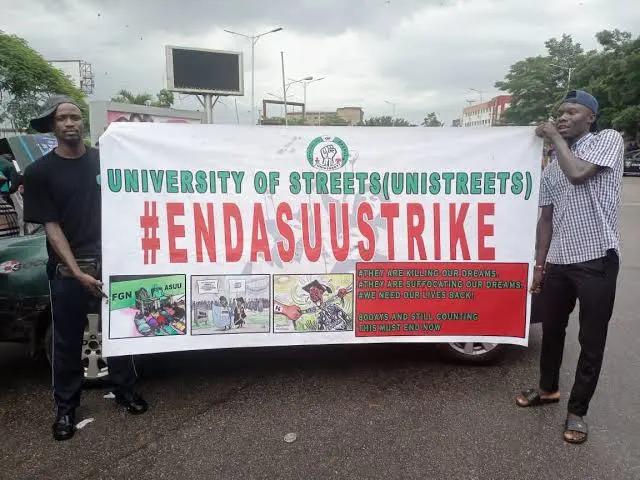
Despite its subsidised price, students’ experience shows the cost of industrial strikes in Nigerian tertiary institutions is expensive. Even though the only alternative — privately-owned tertiary institutions — is not affordable to the poor, what students suffer from academic calendar disruption, emotional stress, and time wastage from government-owned tertiary institutions are way costly and unquantifiable.
The strike by the universities’ academic staff is already in its 6th month, and as no signal of resumption seems in sight, Chiamaka Nnosiri, a student of the University of Uyo, has started losing hope. After gaining admission in 2019, she targeted 2023 as the year of her graduation for her four-year course. But that was before she knew what the Academic Staff Union of Universities (ASUU) does — strike.
Three years later, she just barely finished her undergraduate level one (UG1) in school. At present, she is in level two and when that would change was what she has always refused to discuss; because she couldn’t tell.
Every time she thought about the strike, she said she fell into depression. To escape this, she found a job as a hotel receptionist where she lost her phone while on duty. Then got frustrated out of the job when the hotel manager told her that her employment conditions included engaging in sexual activities if the need ever arose.
ASUU has undergone 16 different industrial actions since 1999 — the periods have stalled the academic calendar for four years, every time demanding the revitalization of government’s universities, payment of earned academic allowances, promotion arrears, and most recently, adoption of University Transparency Accountability Solution (UTAS) as against government’s Integrated Payroll and Personnel Information System (IPPIS).
To meet ASUU demands, Chris Ngige, the Federal Minister for Labour, said up to N1.1 trillion would be earmarked to the academic staff, an amount the Minister reiterated the present government could not afford.
Apart from the budget deficit, the country also witnessed a revenue deficit in the first quarter of 2022, making the government borrow to pay salaries.
Economists advised against borrowing for consumption; this explains why ASUU finds it difficult to sway the Federal Government to dance to its tune.
The latest strike started in February and despite the university lecturers finally reaching an agreement with the Federal Government six months later, the duo are at loggerhead for unpaid salaries during the period the classes were closed.
As the government vowed to implement the no-work-no pay policy, the lecturers’ association headquarters asked its members to gear up for a real strike — a term for declaring the industrial action indefinite.
But since federal government tertiary institutions became ill-funded, politicians have turned to developed nations to educate their children. This translates that the staff’s association, which claims to fight for the poor population, is a leaf-eating grub, eating those it claims to serve.
What if universities fund themselves?
Even though the government always wants to do something for the poor – by making stuff free – “the need to expand the funding base of our universities is now inevitable,” argued Waziri Adio, Executive Director at Agora Policy, a research institution committed to finding practical solutions to urgent national challenges.
“The fact that a university is publicly owned does not mean that its cost must be exclusively and permanently borne by the government,” Adio wrote in his column for THIS DAY.
According to Statista, in 2019, the average tuition fee for a bachelor programme at Nile University, the most expensive private university in Nigeria, was N2.4 million. And the cost at American University of Nigeria, the 10th on the list of most expensive, was N795,000. But these universities are profit-driven enterprises for their owners.
What would the cost look like for a not-for-profit university? Adio put the calculation this way, using the University of Lagos’s (UNILAG) N27 billion annual budgetary allocation as a case study:
“If we stick to UNILAG, a tuition of N100,00 per annum (or N50, 000 per semester) allows the school to generate an extra N4.5 billion per annum. This not only turns the students to real financial stakeholders in their education but also increases their agency as accountability actors in the university system. That N4.5 billion alone will reduce by 35% the funding gap between the government’s subsidy (the N14 billion budgetary allocation) and the N27 billion UNILAG needs to fully deliver its obligations for training students for the year. If the school decides to bridge the entire gap solely from students’ co-payments, the tuition will come to N288, 888 per student per annum.”
Adio also argued that while the subsidised tuition fee emanated with a compassionate intention to persuade people to go to university, such an idea is no more tenable.
With ill-equipped infrastructure and consistent academic calendar disruption of the universities, “we do a disservice to all, especially the poor who have limited options, when we do not have a properly funded public education system,” he wrote.






